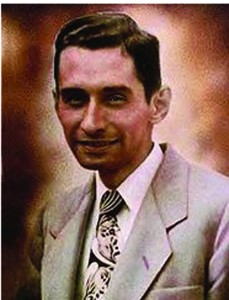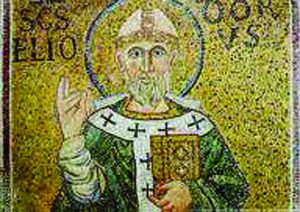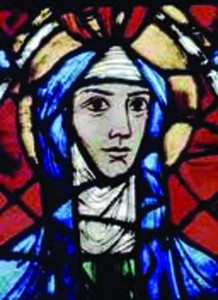July Saints
Saint Heliodorus (+390)
Saint Heliodorus was born at Dalmatia, as was Saint Jerome, his tutor and mentor. He had a great desire to follow the example of the holy hermits, passing his time in prayer and devout reading. After the death of his mother, Heliodorus went to Italy and soon was remarked for his eminent piety.
He was made Bishop of Altino, and became one of the most distinguished prelates of the age He sustained the Catholic faith against the Arian heresy, assisting at the Council of Aquilea. Saint Jerome never forgot his former student, and in one of his letters testifies that he was a bishop who lived in his episcopal dignity with as much fervour and regularity as in a monastery. Saint Heliodorus died about the year 390.
Saint Heliodorus, keep us faithful to the teachings of the Church. (Source: A new dictionary of saints. Comp. by Donald Attwater. Burns & Oates, Kent 1993)
Blessed Carlos Manuel Santiago (1918-1963)
The second of five children, Blessed Carlos Manuel Santiago (“Chali”) was born in the second of five children, in Caguas, Puerto Rico, in 1918. At the age of six, he suffered the loss of virtually all his family’s earthly goods in a fire. The family moved in with his grandmother who, along with his devout and holy parents, set him on the road of the Catholic faith, a road he would follow faithfully all his life.
The year 1931 saw him afflicted with ulcerative colitis, which was to affect his studies from then on, and debarred him from the desire of his life – to consecrate himself to God in the religious life. Prevented from completing his university education, he continued to study on his own – the arts, science, philosophy, religion and music. After only a few lessons, he taught himself to play the organ and the sacred music he loved so much. His other love was nature, where he found God in a special way.
Chali spent almost his entire modest clerk’s salary to promote knowledge and love of Christ, particularly a greater understanding of the significance of the Sacred Liturgy. Living before Vatican II, he zealously promoted liturgical renewal among bishops, clergy and laity. Throughout his life, he dedicated himself to translating English liturgy into Spanish for his fellow Puerto Ricans. He organized many study groups and encouraged involvement of the laity in promoting the faith. This pre-conciliar apostle laid a groundwork for acceptance of active participation of the laity and the use of the vernacular in the liturgy. He took huge delight in the reformation of the Paschal Vigil by Pope Pius XII.
The joy of Easter was a feature of this holy man’s life. To approach him was to approach a light which illuminated one’s perspective of life and its meaning. An enormous spiritual strength transcended his fragile physical constitution and he radiated the joy and hope that Christ gave with his resurrection. Despite his failing health for so many years, no complaints ever clouded the joy with which he
faced life.
His illness progressed painfully but his spirit never failed. He lived each moment, quietly overcoming his pain with the profound joy of one who knows himself to be resurrected. Following an aggressive life-saving surgery in 1963, he was found to have advanced terminal rectal cancer. Towards the end of his life, he experienced the desolation of Christ on the cross, apparently abandoned by God. But, shortly before he died, he rediscovered the Word he had lost, and which had given sense to his entire life. He died on 13 July 1963, the first Caribbean born layman to be beatified.
Blessed Carlos, teach me to rejoice and become holy if illness strikes. (Sources: various internet sites)
Saint Bridget of Sweden (1304-1373)
Saint Bridget was born into a pious, wealthy family in Uppland, Sweden, and from an early age showed signs of extraordinary religious visions. At the age of 13, she married Ulf Gudmarsson, over whom she exerted great influence, and with him had eight children. Her saintly life and great charity made her name known far and wide.
After her husband’s death, his widow devoted herself entirely to practices of religion and asceticism, and to good works. The visions she experienced in childhood became more definite and frequent, and she wrote down the revelations she received from her Lord, Jesus. Bridget now founded a new religious congregation, the Brigittines, or Order of St. Saviour. She accomplished the greatest good in Rome by her pious and charitable life, and her earnest admonitions to others to adopt a better life. Always she maintained her ascetic way of life. The year following her death her remains were conveyed to the monastery at Vadstena. She was canonised in 1391.
Saint Bridget, help me to live a better life in my present circumstances.
(Source: A new dictionary of saints. Comp. by Donald Attwater. Burns & Oates, Kent 1993)


 Entries(RSS)
Entries(RSS)